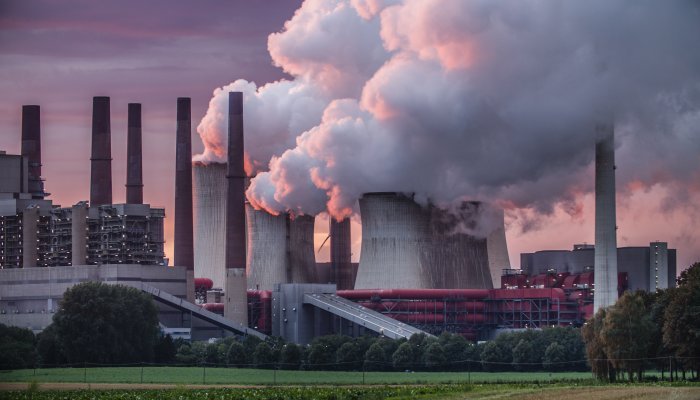Time to dust off one of management’s hoariest adages – 'If you can’t measure it, you can’t manage it' – for a new age. According to research published towards the end of 2022 by Boston Consulting Group (BCG), there’s a strong link between a company’s measurement of its emissions and its ability to reduce them.
With all that remains now from COP27 being the whiff of fuel from private jets, one can expect the pressure on corporates to ramp up their ESG (environment, social and governance) scores to protect their reputations, comply with legislation and – yes – realise bottom-line benefits.
BCG’s research paints a somewhat dire picture, with the atmospheric concentration of carbon (415 parts per million, or ppm) now perilously close to the 430ppm which has been identified as the trigger for a 1.5°C rise in global temperatures.
The link between emissions measurement and emissions reduction is clearly one of the most valuable outcomes of the research. Forty-five percent of companies that partially measure their internal and external emissions (Scope 1, 2 and 3) declare a significant reduction in those emissions, with the percentage rising to 58% for those that measure the full scope of their internal emissions.
Among the elite group of companies that measure the full scope of both internal and external emissions, 64% have realised a significant reduction in emissions.
The corollary is not so rosy: measurement is a problem, with very little progress made since the first study in 2021. Eighty percent of respondents only partially measure their internal and external emissions, while only 10% fully measure internal emissions, with a further 10% fully measuring both internal and external emissions.
A major problem is that that accurate measurement remains elusive, with respondents estimating a 25%-30% average error rate in their measurements, a small (five percentage point) improvement on 2021. The related and even bigger problem is that while Scope 3 (see box) emissions account for more than 90% of emissions, they are devilishly hard to measure, and are a first priority for only 12% of organisations.
The focus on Scope 1 and 2 emissions, and the general avoidance of Scope 3, is surely the reason that emissions continue to rise despite growing focus on minimising climate change.
There are benefits
If you worry that the way Covid-19 played out (lockdowns based on models produced by experts and widely accepted by authorities) could have at least some parallels with the longer-running climate-change scenario, rife with its own set of “unanimous” experts, it’s some comfort to see that companies are actually looking for benefits from reducing their emissions. More than 70% of respondents expect $1 million or more in annual benefits, while 37% see benefits in the $100 million-plus range.
These benefits are expected to flow from improved reputation and lower operating costs (54%), higher company valuations (48%), increased revenues (43%), local tax benefits (40%) and ability to attract talent (37%).
However, it bears mentioning that these benefits are not necessarily realised, and there is no data on the costs included in BCG’s research – but see the sidebar for details of the costs projected by PPC.
On the one hand, we should not necessarily read too much into this lacuna; these are early days, and the data is probably just not available. But, on the other hand, business is usually very quick to produce a cost:benefit analysis for most projects. The worry is that reducing emissions is seen as a no-brainer, something that just has to be done for a variety of compelling non-business reasons, and that the business case (in the classic sense) might have been somewhat neglected. As the sorry case of FTX and its moralising CEO Sam Bankman-Fried should vividly remind us, an avowed wider moral purpose can hide some ugly realities.
Roll on, 4IR
A final nugget from the research is the need for technology to be harnessed to make emissions measurement both more accurate and easier to do.
“Measuring accurately is essential to drive effective emission reduction plans and it is also a very challenging task – it requires compiling, assessing and interpreting massive amounts of data on an organisation’s operations,” says Charlotte Degot, founder and global leader of CO2 AI by BCG. “Doing this task manually is extremely hard, but digital tools and AI can process data from diverse, unstructured sources (e.g., invoices) and match them with emissions factors.”
She makes the important point that technology can play a key role – will in fact be the enabler, one might argue – in solving the challenge of accounting for Scope 3 emissions.
To get a glimpse of what it’s like on the frontline of emissions measurement and reduction, consider the case of PPC in the sidebar.
Jargon buster
When it comes to emissions measurement, it’s important to understand that internal emissions fall into two categories:
- Scope 1: Direct emissions made by a company; for example, running a plant.
- Scope 2: Indirect emissions, the main culprit being the energy it uses for heating or cooling buildings that is produced by a third party.
- Scope 3 covers the emissions relating to the company’s value chain. This would include the emissions created by supplier to produce something the company uses, emissions created to get the product to market (logistics), and then emissions caused when customers use and dispose of the product.
Sights set on net zero
Reducing emissions is a burning topic in the construction industry – cement is responsible for a whopping 5%-8% of greenhouse gas emissions. Making cement not only uses inordinate amounts of energy, but the chemical processes involved also generate CO2. On average, manufacturing a ton of cement releases 642kg of carbon dioxide. South African cement is somewhat above that at 671kg, rather more than India’s 582kg but way better than the United States’ 745kg.
Oh, and did I mention that cement demand is growing strongly, and is expected to hit 18 billion tons by 2050, up from 4.1 billion tons in 2015?
In short, there’s very good reason for a cement company to be focusing on ways to reduce its emissions. South Africa’s iconic cement brand PPC collaborated with GIBS to produce the Building Africa Report 2022, to look at ways of reducing cement’s carbon footprint within the context of Africa’s drive to industrialise. (PPC had recently completed its Task Force on Clime-Related Financial Disclosures (TCFD) report, and much of this information fed into the Building Africa report.)
PPC has set itself a target or reaching net zero emissions by 2050, a stretch target in anybody’s book. The challenges it faces are an indication of the difficulties that many businesses, particularly those in carbon-intensive sectors, face – some of them intractable. PPC will spend R664 million in 2020-25 to reduce the amount of carbon released per ton of cement by 10% (from 756kg to 680kg), with further costs not yet disclosed. Reaching net zero will clearly be a major expense (the figure comes from the TCFD report) but, says PPC’s head of operations, Delon Perumal, it is assumed that all decarbonisation projects create value, yield positive net present value aligned to internal financial metrics, and are entrenched with the company’s normal capital allocation to sustain operations.
On the question of measurement error, Perumal says that 25%-30% is way off the mark – the company calibrates its instruments regularly and estimates an error margin of more like 5%, with an internal target of 0%. However, it must be noted that the company’s focus is very much on Scopes 1 and 2.
Chris Greensmith, technical director of structural engineering at Zutari, an engineering and advisory firm, says that a key issue in South Africa is that there are as yet no agreed carbon factors (used to calculate the emissions per unit of activity) for South African materials. At present, projects must begin with the generic global figures and calculate the carbon factors for themselves. “It’s laborious but it’s not hard,” he says. He argues that it’s more important to establish a solid baseline from which to measure progress in reducing emissions than to try and establish absolute, accurate readings.
“It also shows what to focus on,” he adds.
Perumal says that another challenge is that PPC is still at the stage of dealing with all its data manually, although controls are in place. The company is in the process of automating data capture, and presumably the use of AI cannot be far behind to automate analysis.
The clinker conundrum
Clinker, the main constituent of cement, is created by heating clays and limestone at very high temperatures. It uses a lot of energy, and the process itself also releases large volumes of CO2. It’s suggested that reducing the proportion of clinker used will necessarily reduce cement’s carbon footprint – the possible reduction is disputed, with estimates of 50% and 37%. Viable substitutes for clinker already exist, including waste products from other carbon-intensive processes such as coal burning and steel smelting.
Increased efficiency has the potential to generate another significant portion of emissions savings, with 22% of planned savings to be derived from designing buildings that are more energy efficient and longer lasting.
Greensmith also points out that embodied carbon also needs to be taken into account – this is the carbon dioxide emissions associated with processes related to materials and construction through the life cycle of the structure. It’s similar in concept to Scope 3, and nobody is yet giving it much attention, at least in South Africa.
In the end, though, given the stubborn carbon intensiveness of cement, to achieve net zero (or anything like it) means that carbon capture – capturing the CO2 emitted and storing or using it – will ultimately have to play a role. Carbon capture is very expensive, so it’s likely that incentives would need to be developed to push the industry in that direction. But it is possible – one Norwegian factory is set to open a carbon-capture facility that, on its own, looks likely to cut the plant’s emissions by 50%.
Meanwhile, says Perumal, PPC now has a solid baseline in place and knows what areas it should be concentrating on first. “We have made significant progress,” he says and, of course, it’s ultimately the accuracy of the measurement used that will allow the company to achieve its ambitious goal.










